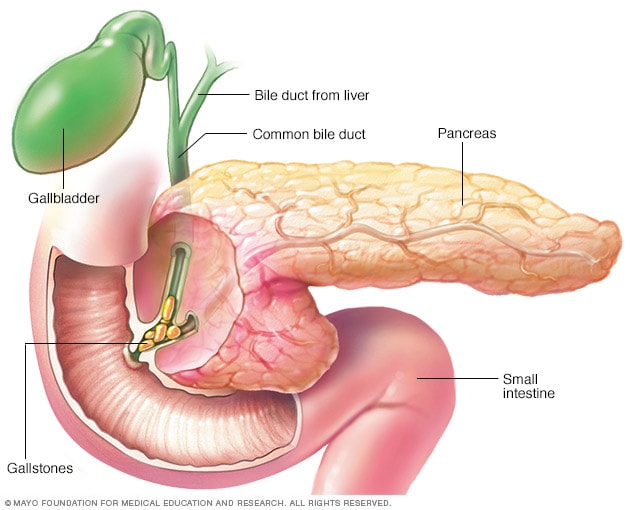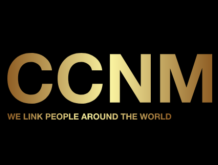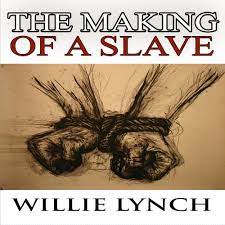The Story of Our Lives, Is A Compilations Of Daily Journey’s
We are complex, ever evolving beings, who create our daily experiences and interactions with each other to display our expression of love or a lack of love, through our disposition, behaviors and conversations with everyone we come in contact with. Our individual realties are a result of our belief systems or spiritual perceptions. That’s why we can each look at the same picture and come up with different assessments about what the image was or portrays.
As children, our parents or guardians orientate us to their family socialization procedures, daily routines, school rules & regulations, religious traditions, our play, social, and or work environments and our surrounding communities. Organizing entities (police, firemen, aldermen, seniors, representatives, mayors & governors) locally, regionally, throughout the US, and in other countries around the world, all work to influence our behavior. These interactions help shape the role we play in every situation we encounter throughout the day.
How or why then is there a problem today with youth violence, self hatred, perverted sexual behaviors, fowl language, disparities in access and disbursements of economic resources (housing, health food, loans & grants for small business start ups & advancements). What did we fail to do as parents, guardians, educators, spiritual leaders, elected officials, police men & women, fire men & women, aldermen, congressmen, senators, representatives, judges, lawyers, prosecutors and many others who were in charge of structuring and implementing the life styles, rules & regulations that control the do’s don’ts’s of life in the various societies throughout this plant. Why did the leaders of our great universe decide that there had to be rich and poor, challenges instead of collaborations, incarnation instead of revitalization of spirit, body & soul?
When was it decided that all men & women should be divided by their social economic status, verses forming a wholistic, self containing unity in the communities that supports all of its inhabitants equally. Where has the current political, economic, spiritual, family, education, civic or policing systems manifested today? In city slums, low income, economically disenfranchised communities where majority brown and melanated people reside. In contrast to a fair equitable system where everyone has access to all resources. Who decided that everything and everybody should be controlled by the 1% of the world’s population and not by every inhabit of this universe? You better think ! I wonder why? Money, Money, Money…
Life Is an Ever-Evolving Discovery of Self, The God Within…
I have been working with an agency that nurtures a variety of needy populations. And in doing so, they have many challenges to address on a daily basis. With some innovative approaches, I believe that they can change the environment and enhance the way that the adults they work with, respond to their assignments, tasks, and instruction.
First, adults have to be approached as adults. We learn through acknowledgment of the skills we already have when we come to the table. Then as new information is presented, we grow as a result of exposure to that information. However, if the information is delivered as demand or order, it will be viewed by most adults adversely. Here’s an example: If you ask me to do a simple task such as registering everyone that enters the facility to complete all of the inquiries on the page, and to have each person sign the log, I should be able to proficiently complete that task without further instruction. But at the end of the day, if everyone has not signed in or completed all the information on the form, then I have not completed the assignment as it was given. And I need to modify the registration form, by revising the registration document to comply with the assignment.
Management’s response to the person who failed to complete the assignment as requested should be as one adult to another, “I see that you missed obtaining some information on the registration form, so I would appreciate you entering in the missing information on the form, then submit it to XXX for filing. XXX will confirm that all the information required has been entered, initial it and file it.” The instructions to correct the situation should be given in a professional tone, in private, and as a professional courtesy (one adult to another) not as a directive.
Well, that’s my summation for the day. Let’s live and learn from each other, and respect one another as the unique people that we are.
When We Love Each Other, Everything Is Possible...
Love is the magic ingredient to living a life of ups and downs, new experiences, failures, and successes, and exposure to new realities and ever-changing environmental evolutions. We are a species called Homo sapiens.”Distinguished from other animals by our superior mental development, power of articulate speech, and upright stance” (Merriam-Webster, 2022).
Respect is another essential concept to peacefully living amongst others. Everyone has a right to exist just as the glass that grows from the seed, the birds that know when to fly south because of the weather, and the bees that have the capacity to slow their breathing down when it’s coal. Let every day that you live this human experience, propel you closer to attaining the short-term goals that you have established for yourself.
Think about the life you would like to live, then establish your goals to achieve the life style. Create the objectives that will help you bring about the end result that you want to realize and begin your journey toward shifting your current paradigm. The way that you think about yourself, the environment you live, work, and social in, and the people you surround yourself with. You are the designer of your own destiny. Create your own Vision Board.
Work Can Be A Relaxation Technique… If You Enjoy What You Are Working On…
May 8, 2022, I have been working as a creative producer, writer, and trainer for many years. But, nothing makes me more enthralled than defining my business goals and objectives, especially when I can see how the outcomes will benefit our youth and our seniors. They are our future leaders and past experts and must learn how to gain greater access to the resources they will need to survive and thrive in this world. Trying new things excites me, especially when what I’m doing enables me to engage others who aspire to learn what I am sharing. And that thrust for knowledge is what I love. It’s what makes every moment of their quest for new information my commitment to helping them acquire it. Peace!
Today, February 12th, 2021 is another day the Lord has made. I pay tribute to my friend, Margo Richmond. She is a spiritual warrior, a community advocate, a spokesperson for those who can’t speak and she’s my soul sister from another mother, they call her Ms. Margo Richmond.
Her brother had a heart attack and she’s on her way to be at his side. She’s got a praying family, a lovely mother, and many cousins, nieces, and nephews, and they’ve all been called into counsel. And so, as the bible says, “where two or more gather, there I, the Lord shall be.” Be confident in that knowledge Margo, and all will be well. We are praying for you, your family, and your brother…
Today’s young people are identified by a variety of categories. For example, Millennials also known as Generation Y range in age between 24-38. Whereas the Generation Z group ranges in age between 4-24 and the Baby Boomers 46-64. Age only depicts a person’s time in this realm of life. It does not reflect a person’s level of maturity or consciousness. Age is an outward expression of the inner self demonstrated through our behavior.
As we grow older, we become more aware of our inner selves. Stanford Encyclopedia of Philosophy (2020) asserts that human beings are aware of their environment, others, their senses (smell, touch, vision, sound taste), and themselves. The more we learn about our history, the better we understand where our belief systems and ideologies (our experiences, our exposures to cultural trends, traditions, and family life skills) came from that shape our perspectives in life. Check-in next week, for another, Publisher Note…
Assertions Based on Observations
12/10/20 Excerpts from https://www.mayoclinic.org/diseases-conditions/pancreatitis/symptoms-causes/syc-20360227
According to the Mayo Clinic, (December 2020) Pancreatitis is an inflammation of the pancreas. The condition is caused by a blockage in the gall bladder from gallstones. Most blockages occur in the gall bladder ducts that pass through the Pancreas, thus you have Pancreatitis. “The Pancreas produces enzymes that with digestion and harmonies that regulate the way your body processes sugar (glucose).” 
Excerpts from Mayo Clinic: https://www.mayoclinic.org/diseases-conditions/pancreatitis/symptoms-causes/syc-20360227
Causes
Pancreatitis occurs when digestive enzymes become activated while still in the pancreas, irritating the cells of your pancreas and causing inflammation.
With repeated bouts of acute pancreatitis, damage to the pancreas can occur and lead to chronic pancreatitis. Scar tissue may form in the pancreas, causing loss of function. A poorly functioning pancreas can cause digestion problems and diabetes.
Conditions that can lead to pancreatitis include:
- Abdominal surgery
- Alcoholism
- Certain medications
- Cystic fibrosis
- Gallstones
- High calcium levels in the blood (hypercalcemia), which may be caused by an overactive parathyroid gland (hyperparathyroidism)
- High triglyceride levels in the blood (hypertriglyceridemia)
- Infection
- Injury to the abdomen
- Obesity
- Pancreatic cancer
Endoscopic retrograde cholangiopancreatography (ERCP), a procedure used to treat gallstones, also can lead to pancreatitis.
Sometimes, a cause for pancreatitis is never found.
Risk factors
Factors that increase your risk of pancreatitis include:
- Excessive alcohol consumption. Research shows that heavy alcohol users (people who consume four to five drinks a day) are at increased risk of pancreatitis.
- Cigarette smoking. Smokers are on average three times more likely to develop chronic pancreatitis, compared with nonsmokers. The good news is quitting smoking decreases your risk by about half
- Obesity. You’re more likely to get pancreatitis if you’re obese.
- Family history of pancreatitis. The role of genetics is becoming increasingly recognized in chronic pancreatitis. If you have family members with the condition, your odds increase — especially when combined with other risk factors.
Complications
Pancreatitis can cause serious complications, including:
- Pseudocyst. Acute pancreatitis can cause fluid and debris to collect in cyst-like pockets in your pancreas. A large pseudocyst that ruptures can cause complications such as internal bleeding and infection.
- Infection. Acute pancreatitis can make your pancreas vulnerable to bacteria and infection. Pancreatic infections are serious and require intensive treatment, such as surgery to remove the infected tissue.
- Kidney failure. Acute pancreatitis may cause kidney failure, which can be treated with dialysis if the kidney failure is severe and persistent.
- Breathing problems. Acute pancreatitis can cause chemical changes in your body that affect your lung function, causing the level of oxygen in your blood to fall to dangerously low levels.
- Diabetes. Damage to insulin-producing cells in your pancreas from chronic pancreatitis can lead to diabetes, a disease that affects the way your body uses blood sugar.
- Malnutrition. Both acute and chronic pancreatitis can cause your pancreas to produce fewer of the enzymes that are needed to break down and process nutrients from the food you eat. This can lead to malnutrition, diarrhea and weight loss, even though you may be eating the same foods or the same amount of food.
- Pancreatic cancer. Long-standing inflammation in your pancreas caused by chronic pancreatitis is a risk factor for developing pancreatic cancer.
Causes
Pancreatitis occurs when digestive enzymes become activated while still in the pancreas, irritating the cells of your pancreas and causing inflammation.
With repeated bouts of acute pancreatitis, damage to the pancreas can occur and lead to chronic pancreatitis. Scar tissue may form in the pancreas, causing loss of function. A poorly functioning pancreas can cause digestion problems and diabetes.
Conditions that can lead to pancreatitis include:
- Abdominal surgery
- Alcoholism
- Certain medications
- Cystic fibrosis
- Gallstones
- High calcium levels in the blood (hypercalcemia), which may be caused by an overactive parathyroid gland (hyperparathyroidism)
- High triglyceride levels in the blood (hypertriglyceridemia)
- Infection
- Injury to the abdomen
- Obesity
- Pancreatic cancer
Endoscopic retrograde cholangiopancreatography (ERCP), a procedure used to treat gallstones, also can lead to pancreatitis.
Sometimes, a cause for pancreatitis is never found.
Risk factors
Factors that increase your risk of pancreatitis include:
- Excessive alcohol consumption. Research shows that heavy alcohol users (people who consume four to five drinks a day) are at increased risk of pancreatitis.
- Cigarette smoking. Smokers are on average three times more likely to develop chronic pancreatitis, compared with nonsmokers. The good news is quitting smoking decreases your risk by about half
- Obesity. You’re more likely to get pancreatitis if you’re obese.
- Family history of pancreatitis. The role of genetics is becoming increasingly recognized in chronic pancreatitis. If you have family members with the condition, your odds increase — especially when combined with other risk factors.
Complications
Pancreatitis can cause serious complications, including:
- Pseudocyst. Acute pancreatitis can cause fluid and debris to collect in cyst-like pockets in your pancreas. A large pseudocyst that ruptures can cause complications such as internal bleeding and infection.
- Infection. Acute pancreatitis can make your pancreas vulnerable to bacteria and infection. Pancreatic infections are serious and require intensive treatment, such as surgery to remove the infected tissue.
- Kidney failure. Acute pancreatitis may cause kidney failure, which can be treated with dialysis if the kidney failure is severe and persistent.
- Breathing problems. Acute pancreatitis can cause chemical changes in your body that affect your lung function, causing the level of oxygen in your blood to fall to dangerously low levels.
- Diabetes. Damage to insulin-producing cells in your pancreas from chronic pancreatitis can lead to diabetes, a disease that affects the way your body uses blood sugar.
- Malnutrition. Both acute and chronic pancreatitis can cause your pancreas to produce fewer of the enzymes that are needed to break down and process nutrients from the food you eat. This can lead to malnutrition, diarrhea and weight loss, even though you may be eating the same foods or the same amount of food.
- Pancreatic cancer. Long-standing inflammation in your pancreas caused by chronic pancreatitis is a risk factor for developing pancreatic cancer.
10/15/20
Today’s Publisher Note is based on an assertion that I have developed over time. For instants, most millennials who are parents – do not seem to understand that their actions manifest through their children’s behaviors. Children learn from observation, listening, and interacting with others. The parents are the first teachers, counselors, mentors, and spiritual leaders.
Their children mimic the behaviors that they see. They develop their understanding of the world and how to live in it from their first teachers, the parents/guardians. Then their learning is extended through their interactions with family members, friends, and others. Behaviors are learned and so are reactions to external stimuli (joy, anger, sadness, anxiety, and or depression) that others interject into our lives.

According to Watson (1913), a behavioral psychologist believed that all behavior is learned through conditioning. Thus if a child continually observes his mother engaged in an argument with his father, and when the fight is over, the father hits the mother because she has disagreed with him, the child then punches his sibling when they disagree with one another. The resulting learned behavior for the child is to fight when someone disagrees with them. In conclusion, model the behavior you want those who are observing you to see.
Moreover, Rivier University (2019), confirms that the study of behaviorism is the analysis of observable behavior. So I would suggest that parents monitor their behavior while in front of their children. Young people mimic behaviors that they see, so be very careful about losing your temper and displaying negative behaviors while your children look on. They are framing their personalities and adapting their responses to things that make them angry. Help them, and model the behavior you want to see. Peace…
7/29/20
Today’s note is focused on the family. What is the family unit today? The mother, a senior who has grown children, whose children are adults and have children themselves. What constitutes the extended family? Are they the cousins, aunts, uncles, nieces, nephews, grandparents, close friends, and long-time buddies? What comes with these titles and relationships? Do we diligently understand the responsibilities associated with being a member of a family?
Family members love one another regardless of our shortcomings or personal deficiencies, each family plays a vital role in how the overall unit functions. No member has the right to dismiss, ignore, abandon, or exclude another family member from any benefit shared by the entire family. Family benefits should include the right to assist one another when in need. If Aunt Sussie needs $1,000 and there are 10 working adults in the family unit, each should be willing to invest $100.00 into Sussie’s financial deficiency. She can repay each member their $100.00 over the next 10 months. So that everyone gets their investment back. Then when John needs $5,000 for a down payment on his new home, the 10 family members would need to contribute $500 each to assist him. Then once he’s in the property, John can borrow against the equity in his home to repay each family contributor their $500.00 investment.
Families are designed to be sustaining. They should be able to acquire property every year as a group, to ensure that each member of the adult family ends up with real estate for their individual family unit. That is what other cultures have been doing since the beginning of their invasion of this country. We are the native inhibitors of “Turtle Island is a name for the Earth or for North America, used by some Indigenous and First Nations people and by some Indigenous rights activists. The name is based on a common Indigenous creation story” (Turtle Island, the place we now call America). Think about that, a great number of people who have dark-melanated skin have been misled for many generations. Most believe that they are from another continent (Europe, Asia, Africa, North America, South America, Australia, and Antarctica). And that they were sold into slavery. That is true for some (but not for the melanin people who were inherent to this land. What a distortion of the truth, Generations of melanin people have been misled into believing that they are less than everyone else. I wonder why? Is it because people with melanin have been reared to ignore what is happening to them and around them because striving is all that they should strive for? That way, the rich and elite will always have a volunteer workforce. All they had to do was practice the Willie Lynch theory, you know the one that manipulates melanins into hating each other, distrusting one another, even their mothers and fathers because they lack respect for themselves and others. I believe that the millennials may never have empathy for anyone else because self-preservation is paramount in their minds.
Like Fröhlich (2019), Author of “East Africa’s forgotten slave trade” said, East Africans were sold as slaves by Muslim Arabs to the Middle East and other places via the Sahara desert and the Indian Ocean.” Most People of color (melanated people) don’t know their innate place of birth. They can’t trace their roots or their family history for more than four generations. See how far you can trace your family roots. What part of the world did you come from or are you indigenous to this great country, Turtle Island, the land of free bronze skin Indiana’s and Melaninated people?



